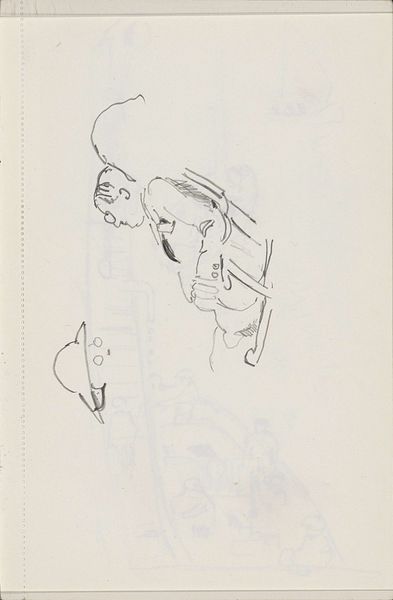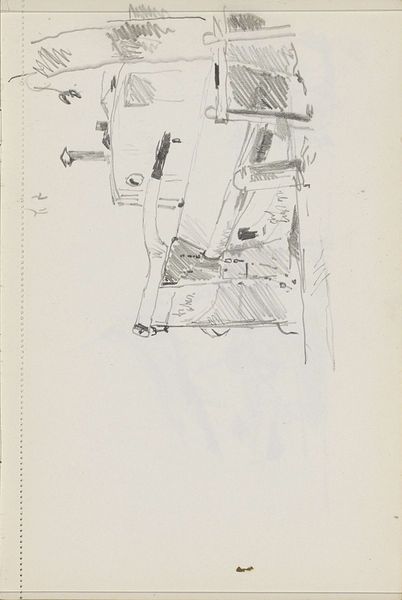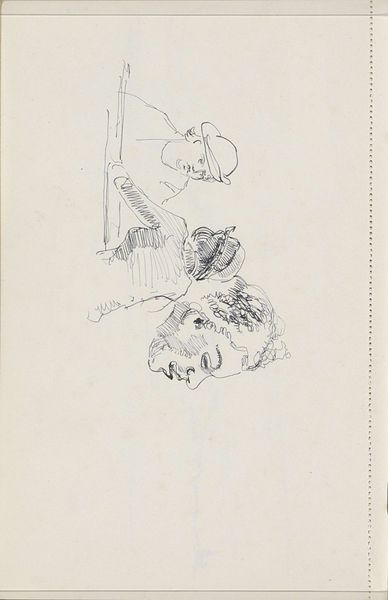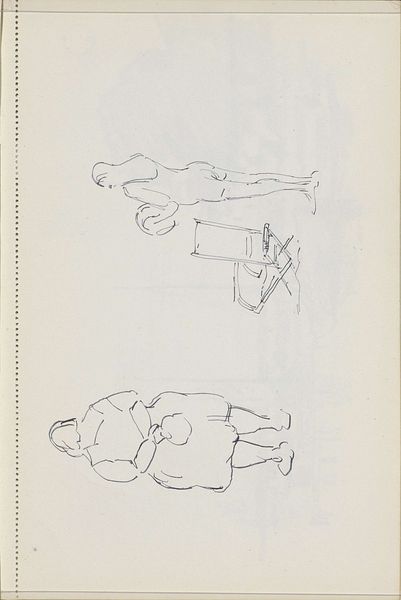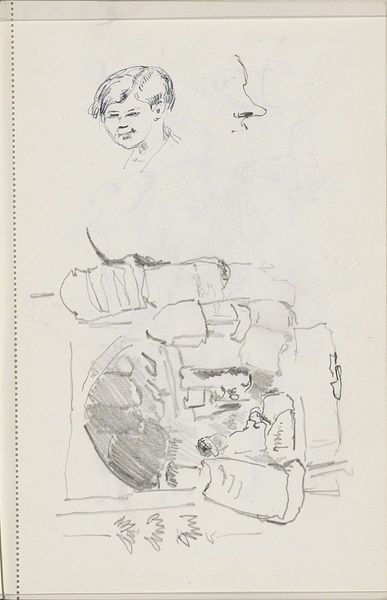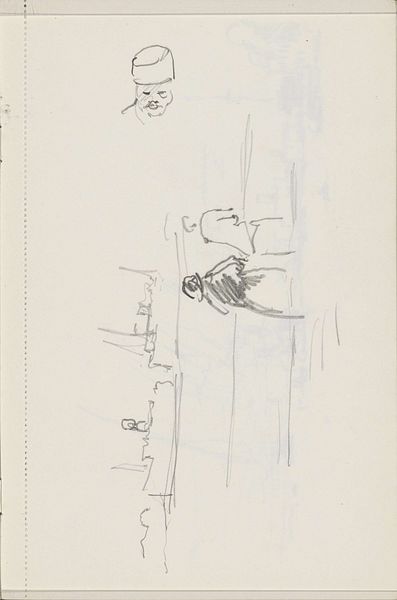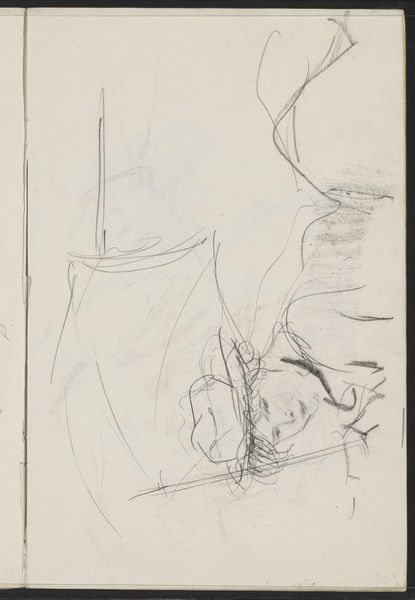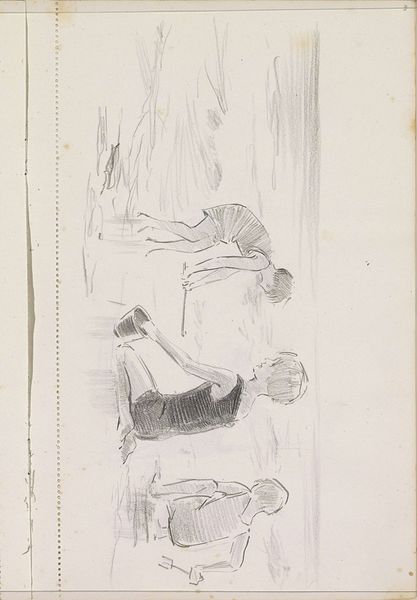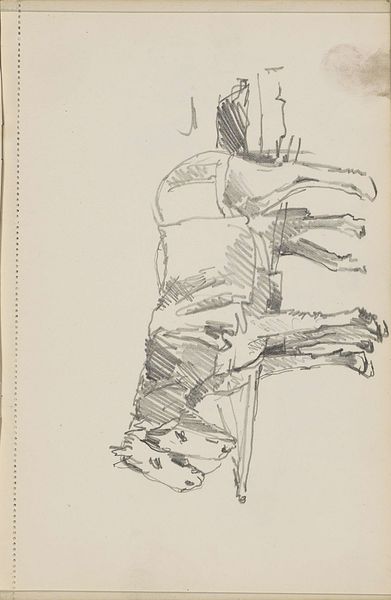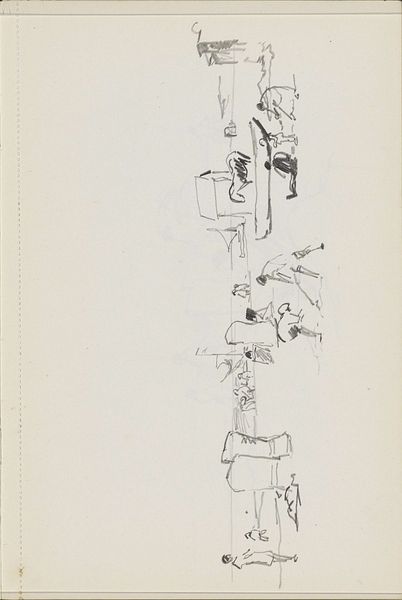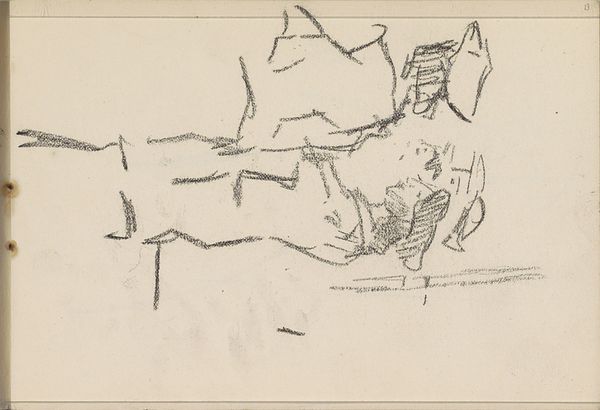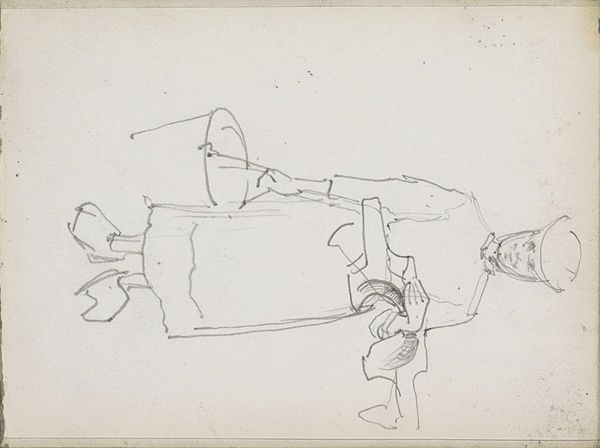
drawing, paper, ink
#
drawing
#
figuration
#
paper
#
ink
#
realism
Copyright: Rijks Museum: Open Domain
Editor: So, this is *Reading Man at a Table* by Cornelis Vreedenburgh, likely from 1935 or '36. It's an ink drawing on paper, and it feels very… provisional, almost like the artist was just capturing a quick thought. It has a kind of nonchalant grace. What do you see in this piece? Curator: I see layers of symbolic potential, shimmering beneath the seemingly simple subject. The act of reading itself carries enormous weight. The individual immersed, separate. This separation becomes more potent when you consider the economical precarity of the interwar period, a need for knowledge as power perhaps. Do you see isolation in the way the figure is rendered? Editor: Definitely! It’s partly the sketchy lines, as if he could vanish at any moment. But the upside-down and duplicated drawing makes me uneasy, maybe mirroring different facets of the man's self in a confusing and unstable time. Curator: Precisely! Think of the “doppelganger” motif, a mirrored image that brings insight but may equally bring chaos. Is it merely reflection, or is something more profound implied in that visual repetition? Is Vreedenburgh showing us his interior state? Or perhaps multiple conflicting futures? What emotional reaction did it elicit from you when you first encountered it? Editor: A sense of vulnerability. As if he is split. This interpretation helps. Curator: It's the magic of symbolism; visual cues that resonate across time, connecting us to shared cultural and psychological landscapes. I am struck by how contemporary Vreedenburgh is despite the years, capturing a feeling of estrangement. Editor: It’s amazing how much meaning can be packed into such a simple drawing. Thanks!
Comments
No comments
Be the first to comment and join the conversation on the ultimate creative platform.
